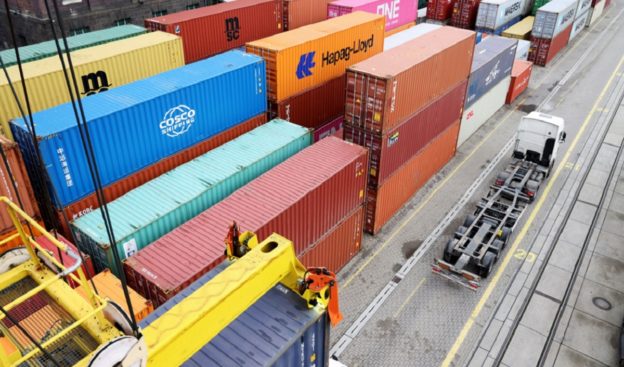The government has stepped up to ensure smooth logistics while promoting the use of cleaner fuels. Coming at an opportune time, the Gati Shakti National Master Plan (NMP) will act as a booster dose to benefit the sector, especially green logistics.
The logistics sector has always been the backbone of the Indian economy. Fueling the development of the manufacturing and e-commerce sector, it has been on the path of robust growth for the past few years. However, its importance was proven more strongly when everything came to a standstill in 2020 due to the global pandemic. Yes, Indian logistics has evolved, but the US $ 250 billion sector still suffers from many bottlenecks. Keeping in mind that any shortcomings in the industry will impact other sectors as well, the government has stepped up to ensure smooth logistics while promoting the use of cleaner fuels. Coming at an opportune time, the Gati Shakti National Master Plan (NMP) will act as a booster dose to benefit the sector, especially green logistics.
India is the third-largest GHG emissions (country-wise), with nearly 2.35 giga tonnes of carbon emissions in 2021. Therefore, the logistics sector, too, is growing environmentally conscious and trying to reduce its carbon footprint by switching to alternate fuels. Furthermore, the government’s key initiatives, including the Sagarmala Programme, GST reduction, and NMP, to name a few, will pave the way to green logistics.
Gati Shakti NMP, potentially a masterstroke
The logistics sector is now a frontrunner and is expected to grow at a 10-12 per cent CAGR to US $ 380 billion by 2025. But even today, logistics and supply chain costs account for 13-14 per cent of India’s GDP, which is higher than most other countries. Therefore, to accelerate inclusive and multimodal connectivity, Prime Minister Narendra Modi launched the Gati Shakti NMP in October 2021. It will reduce logistics costs and improve infrastructure efficiency.
The PM Gati Shakti NMP is a transformative economic and sustainable growth approach driven by seven engines – roads, airports, railways, mass transport, logistics infrastructure, and waterways. The 100 lakh crore project will ensure faster implementation of development projects through technology, leading to a quicker, smoother, and more efficient delivery.
Efficient movement of goods with Unified Logistics Interface Platform (ULIP)
Integrating 24 departments and six ministries into its Unified Logistics Interface Platform (ULIP), the government is creating a single-window logistic platform. Acting as unified documentation for accelerated and efficient execution of projects, it will provide real-time visibility to fill the gap in the movement of goods. Given the data exchange with private players, everyone will compete with each other to reduce costs and enhance the ease of doing business.
Even with inadequate road infrastructure, approx 64 per cent of the freight movement is through roads. Under Gati Shakti, a network will be created where roads link to railway lines that will further feed into major and minor ports, leading to the efficient movement of goods, especially from the hinterlands. Intending to integrate all the multimodal connectivity projects holistically, the NMP will optimize the efficiency of the movement of goods and people. The Ministry of Road Transport and Highways and Shipping plans to connect all state capitals in the northeastern region by augmenting the NH network to 2 lakh km by 2025. These developments will reduce the turnaround time, leading to efficiency enhancement in the supply chain.
The emergence of alternate fuels is another opportunity that the logistics sector can tap on. As of now, due to the poor infrastructure of CNG and LNG pumps, logistics companies and users are hesitant to opt for cleaner fuels. However, with the government’s constant efforts towards promoting NG as a long-haul transportation fuel, it will likely become a reliable choice due to its lower storage costs and lesser emissions. In fact, the CNG dispensing stations are expected to grow at a CAGR of 17 per cent and the government is planning to set up 1000 LNG stations across India in the next three years.
Foreign investment to further boost green logistics
Needless to say, FDI plays a crucial role as it is one of the major sources of capital, especially for developing countries like India. After a series of economic shocks, the foreign investment outlook is finally beginning to brighten thanks to a series of government initiatives and India’s favourable growth trajectory. So much so that the FDI into the country increased by 62 per cent between April-July 2021.
As far as green logistics is concerned, it has the potential to enhance operations significantly in terms of cost, time, tracking, reliability, transport infrastructure, and transparency. In other words, attracting logistics infrastructure investments can act as a force multiplier for green and resilient multimodal connectivity.
Conclusion
The global pandemic induced the need for technological change in every industry alike, and the logistics sector isn’t an exception. Besides focussing on pushing toward a digital economy, the government has been furthering its decarbonization goals, given the importance of going green and a carbon-neutral economy. With the constant evolution of industries, logistics players will have to adopt technologies to stay relevant.
https://www.financialexpress.com/industry/how-gati-shakti-master-plan-will-benefit-green-logistics-in-india/2515367/





